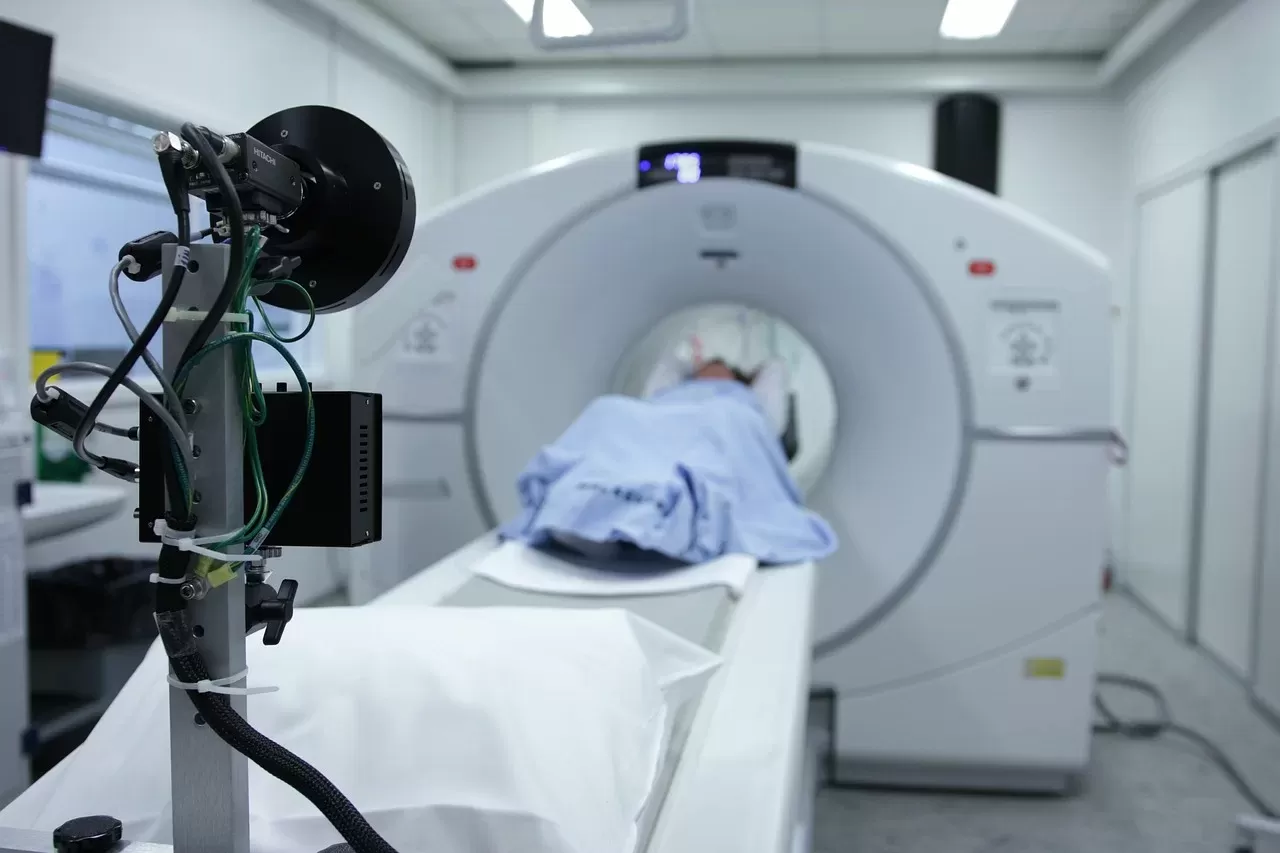Extracorporeal Shock Wave Therapy (ESWT) For Calcific Tendon Issues
- What causes calcific tendonitis?
- How is calcific tendonitis diagnosed?
- What is extracorporeal shock wave therapy?
- How can focused extracorporeal shock wave therapy help me?
Calcific tendon issues can hurt your quality of life. Everyday tasks that are usually easy and simple can become increasingly difficult as pain reduces your range of motion. Some treatment options can be invasive and distressing for anyone fearing needles. Extracorporeal shock wave therapy (ESWT) is a non-invasive alternative treatment option that has proven effective.
At London Foot Pain Clinic in Wimbledon, we offer ESWT as a ground-breaking treatment to help many painful conditions. This article will discuss calcific tendonitis in the shoulder, but we also see this calcification in and around the ankle. This allows you to understand better how to spot it when to seek medical advice, and what treatment options are available to you. Specifically, the article will talk about focus shock wave therapy, also known as painless shock wave therapy. You'll learn how this can minimise the associated symptoms and encourage the shoulder to heal.
What is calcific tendonitis?
One of the most common conditions that affect the shoulder is calcific tendonitis. In fact, this article suggests that between 4% and 26% of the general population will experience a case of calcific tendonitis in their lifetimes.
This can be incredibly inconvenient as it reduces the normal function of your shoulder’s rotator cuff. If you have the condition, calcium deposits will have formed in your rotator cuff tendon, affecting the range of motion and causing pain. Different patients report different kinds of pain with calcific tendonitis. Some experience persistent pain, and others feel less frequent, sharp twinges as they move their arms. Any pain in your shoulder may well be a result of calcific tendonitis.

What causes calcific tendonitis?
Unfortunately, there is no known underlying cause for calcific tendonitis. It more commonly develops in women between the ages of 40 and 60, but this is an observation only based on the medical data available. However, certain conditions are thought to increase the likelihood of deposits forming.
Hormonal problems such as an overactive or underactive thyroid increase the risk of calcific tendonitis. Metabolic problems like diabetes also carry a higher risk as it increases the chances of calcium building up in the system. People in professions that demand a lot from the shoulder, such as labourers or professional athletes, are also more at risk of developing the conditions. A fall's blow to the shoulder can cause deposits in the rotator cuff tendon.
What are the symptoms to look out for?
Two main symptoms could indicate you are suffering from calcific tendonitis. The first is the feeling of pain in your shoulder. This could be a rapid onset of severe pain that cannot be explained, periodic pain or a constant level of pain that will not cease.
The second common symptom is a limited range of motion in your shoulder. Lifting your arm will likely cause pain, making tasks like putting your hand behind your head seem impossible. This can diminish your overall quality of life as routine tasks become suddenly tricky. You might struggle with dressing and undressing, lifting objects, raising your arm, or extending it behind you.
If you are experiencing these symptoms, it's time to seek medical advice. Leaving your symptoms untreated or masking them with painkillers might cause further damage without realising it. Making up for one shoulder’s weakness by putting more pressure on the other might also lead to further complications.

How is calcific tendonitis diagnosed?
When you visit your doctor, they will likely perform a physical examination. This will check your range of motion and ascertain the level of discomfort and pain you are in. This alone cannot diagnose the condition so that you will be referred for further testing. Your doctor may order an X-ray (our clinic has a dedicated x-ray suite), MRI or ultrasound scan. An X-ray or MRI scan can be used to identify the presence of more extensive calcium deposits in the rotator cuff tendon.
An ultrasound scan is the best diagnostic tool, so ask your doctor for this if you get a choice. By using ultrasound, it is possible to get a clearer image of the deposits. While more significant deposits will appear in other scans, ultrasound can also identify smaller calcium deposits. Moving forward to your treatment options gives a more intricate scope for work and indicates which areas your treatment will need to target to heal your shoulder effectively.
What are my treatment options?
There are a few different treatment options for calcific tendonitis. You may find that you need a combination to treat the condition fully or that more conservative treatments will work without further intervention. Conservative treatment options include prescribed anti-inflammatory medications and a programme of physiotherapy. Extracorporeal shock wave therapy can be used for effective treatment. This is a non-invasive therapy, so if often preferable to injections for patients.
Further non-operative measures are cortisone injections and needle aspiration irrigation. If all of these treatments fail to improve your condition, then surgery to remove deposits might be the only option. However, most patients can be treated without the need for an operation.

What is extracorporeal shock wave therapy?
This article shows that extracorporeal shock wave therapy is used when there is radiological evidence of calcium deposits in the rotator cuff tendon. When conservative treatment options have proven ineffective, it can be used before any invasive treatment options are explored, as suggested here. This article shows that ESWT is a robust therapeutic tool used on the shoulder. But what does the therapy entail?
Despite the word shock, this treatment option does not use electric shocks during treatment. The shock waves are created by sound. Picture the feel of the air if you lean close to a speaker, and that musical pulse is used to target calcific deposits. This is a non-invasive procedure; research shows it can be deemed as effective as invasive procedures such as cortisone injections.
ESWT aims to reduce the inflammation these deposits cause. It is used to rehabilitate the shoulder over a series of sessions gradually. The treatment is well supported by the National Institute for Health and Care Excellence (NICE).
What is the difference between focused and radial shock wave therapy?
Radial shock wave therapy is more traditionally used but is a more painful experience for the patient. It can feel like a repetitive string of waves drumming through the skin, causing discomfort and wasting the energy from the sound waves as they penetrate through the skin.
Focused shock wave therapy manages to avoid the shortfalls of radial therapy, producing a much more comfortable and practical experience for the patient. Instead of the sound wave being absorbed through the skin fat or muscle, the total energy is delivered straight into the rocky, calcific deposits. This is because focused shock wave therapy skips the skin to penetrate deeper into the shoulder. It can reach over 1cm under the skin's surface to ensure this.
For the patient, this is virtually painless. Instead of a drumming feeling into the skin, it is like a vibration of tissues fluttering beneath it. Because of this, treatment is also generally quicker than radial therapy. The lack of pain means a patient can handle twice the amount of therapy in a single session. This means fewer therapy sessions and quicker results.

How can focused extracorporeal shock wave therapy help me?
As discussed in this article, ESWT has shown promising results paired with a low complication rate. Studies into the treatment have not reported severe adverse effects to the therapy in patients.
Focused ESWT is most effective when complemented with a progressive rehabilitation programme designed by a physiotherapist. The number of sessions you need will depend on your specific case, but most patients feel a marked improvement within 3 to 5 sessions. As shown in this study, treatment with focused ESWT leads to a marked improvement in pain experienced in the shoulder. This improves shoulder function by aiding recovery for a full range of motion that will help you get back to normal.
Sessions of focused ESWT change the pressure in the rotator cuff tendon by delivering potent sound waves directly to the calcific deposits. This creates microtrauma in the calcific tendon, engaging the body’s metabolism. This kick starts repair by stimulating the natural healing without damaging any tissue. It also desensitises local nerve endings to help reduce pain symptoms. Some patients can feel the effects of this from their very first session.
How can the London Foot Pain Clinic help?
Get in touch today to discuss your symptoms, and issues and find out if we can help you. We are experts in delivering focused extracorporeal shock wave therapy and have repeatedly shown how it can drastically improve the quality of life of our patients in the Wimbledon area of London.